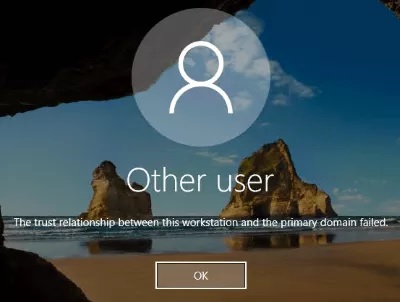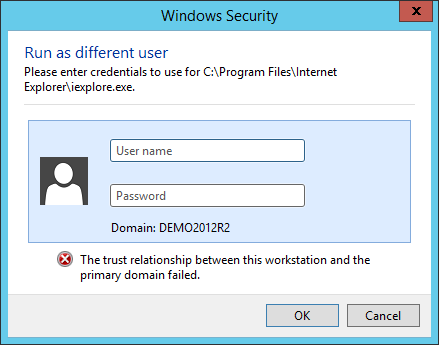

Cross your fingers and hope it works for you. The Security Database on the Server does not have a Computer Account for this Workstation Trust Relationship. Double click the entry for DisablePasswordChangeĦ. server does not have a computer account for this work trust relationship. Of course, stop Exchange Services before proceeding. 8K views 10 months ago ICT Windows Server System Administration Training Do.

I also received the PowerShell Hero 2016. I am a Microsoft MVP for Cloud & Datacenter Management. On the Manage optional features screen, click + Add a. So, after rejoining the computer to the domain, make sure that it has the correct group membership. I have 10 years experience in administering Windows Servers. Establishing Trust using the PowerShell 3. On the Apps & features screen, click Manage optional features. As this is an Exchange server, you need to be careful with the computer account membership in AD. Navigate to HKEY_LOCAL_MACHINE\SYSTEM\CurrentControlSet\Services\Netlogon\Parametersģ. Disjoining and joining again the computer to the domain should fix the trust relationship issue. With admin rights launch regedit.exe from within your VMĢ. For more information on this type of fix visit Microsoft’s page here.ġ. The consistency of this registry hack working is not perfect, but it is something simple you can try to remove this reoccurring headache. The reason this post says, “Kind of Fixing” is because this may or may not work.
FIX TRUST RELATIONSHIP WINDOWS 10 POWERSHELL PASSWORD
What you can do is edit the registry of your virtual machine so it stops the check for the password sync. Modify Domain Name One possible quick fix is to modify the domain name from FQDN to NETBIOS name. Double-click on Maximum tolerance for computer clock synchronization. Unfortunately you don’t always have access to your AD server to make that policy. Go to Computer Configuration > Policies > Windows Settings > Security Settings > Account Policies > Kerberos Policy. Once the domain decides that your VM is out of sync it disconnects the VM from the domain to protect itself.Īccording to VMware’s official KB (KB2100393) you should create a new policy on your tenant AD server. If the result is True then your system supports TLS 1.2. In PowerShell you can find out which protocols your system supports by running this code: Enum::GetNames ( Net.SecurityProtocolType) -contains 'Tls12'. However since you generally use a VM so that you can revert to a saved state, the password sync between your VM and the domain gets thrown off. TLS 1.2 should be enabled to get it working. And since it is on the domain it syncs it’s password with the domain every 30 days to make sure the domain is aware of any changes and the machine is aware of any password policy changes as well. This message occurs because the VM’s machine account is on the domain. Run the script with local admin privileges using powershell 3.0 or above. It is annoying and is one of those things you just don’t want to run into while in the middle of figuring out a more important packaging issue with an application. Copy and paste the below script to a text file and name it with. The trust relationship between the workstation and the primary domain has failed. If you have used VMware in a corporate environment it is very likely you have seen the message before


 0 kommentar(er)
0 kommentar(er)
